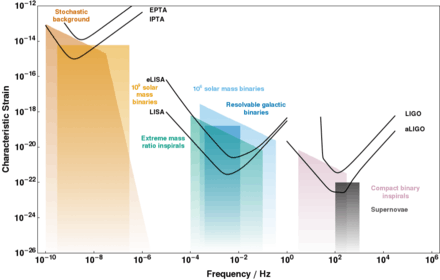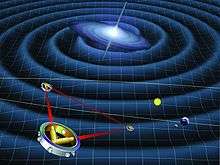Mario Schenberg (Gravitational Wave Detector)
| Location(s) | São Paulo |
|---|---|
| Telescope style | gravitational-wave detector |
The Mario Schenberg (Gravitational Wave Detector, Antenna, or Brazilian Graviton Project[1]) is a spherical, resonant-mass, gravitational wave detector run by the Physics Institute of the University of Sao Paulo, named after Mário Schenberg. Similar to the Dutch-run MiniGRAIL, the 1.15 ton, 65 cm diameter spherical test mass is suspended in a cryogenic vacuum enclosure, kept at 20 mK; and the sensors (transducers) for this detector/antenna are developed at the National Institute for Space Research (INPE), in Sao Jose' dos Campos, Brazil.[2][3]
References
- ↑ Aguiar; et al. (October 2002). "The status of the Brazilian spherical detector.". Class. Quantum Grav. 19 (1949). Bibcode:2002CQGra..19.1949A. doi:10.1088/0264-9381/19/7/397.
- ↑ Aguiar; et al. (April 2005). "The Brazilian gravitational wave detector Mario Schenberg: progress and plans.". Class. Quantum Grav. 22 (10). Bibcode:2005CQGra..22S.209A. doi:10.1088/0264-9381/22/10/011.
- ↑ Aguiar; et al. (May 2008). "The Schenberg spherical gravitational wave detector: the first commissioning runs.". Class. Quantum Grav. 25 (11). Bibcode:2008CQGra..25k4042A. doi:10.1088/0264-9381/25/11/114042.
This article is issued from Wikipedia - version of the 2/12/2016. The text is available under the Creative Commons Attribution/Share Alike but additional terms may apply for the media files.

